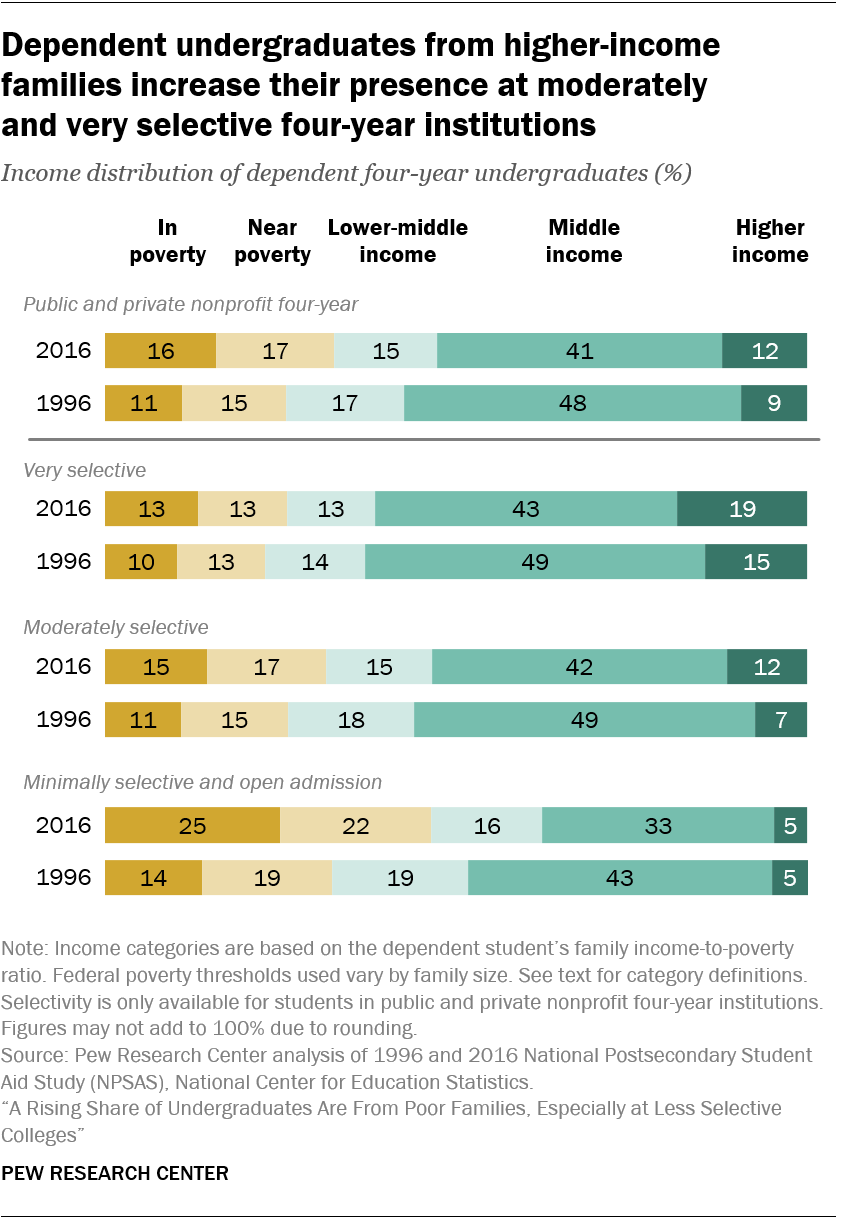Richard Fry and Anthony Cilluffo at Pew:
The overall number of undergraduates at U.S. colleges and universities has increased dramatically over the past 20 years, with growth fueled almost exclusively by an influx of students from low-income families and students of color. But these changes are not occurring uniformly across the postsecondary landscape. The rise of poor and minority undergraduates has been most pronounced in public two-year colleges and the least selective four-year colleges and universities, according to a new Pew Research Center analysis of National Center for Education Statistics data. There has been less change at the nation’s more selective four-year colleges and universities, where a majority of dependent undergraduates continue to be from middle- and higher-income families.
...
At minimally selective and open admission institutions, poor students have nearly doubled their presence from 14% in 1996 to 25% in 2016. The growth in the share of poor students at moderately selective and very selective four-year institutions has been more modest. At more selective four-year colleges and universities, a growing share of dependent students come from higher-income families. For example, at moderately selective four-year institutions, 12% of dependent students were from a higher-income background in 2016, up from 7% in 1996.
